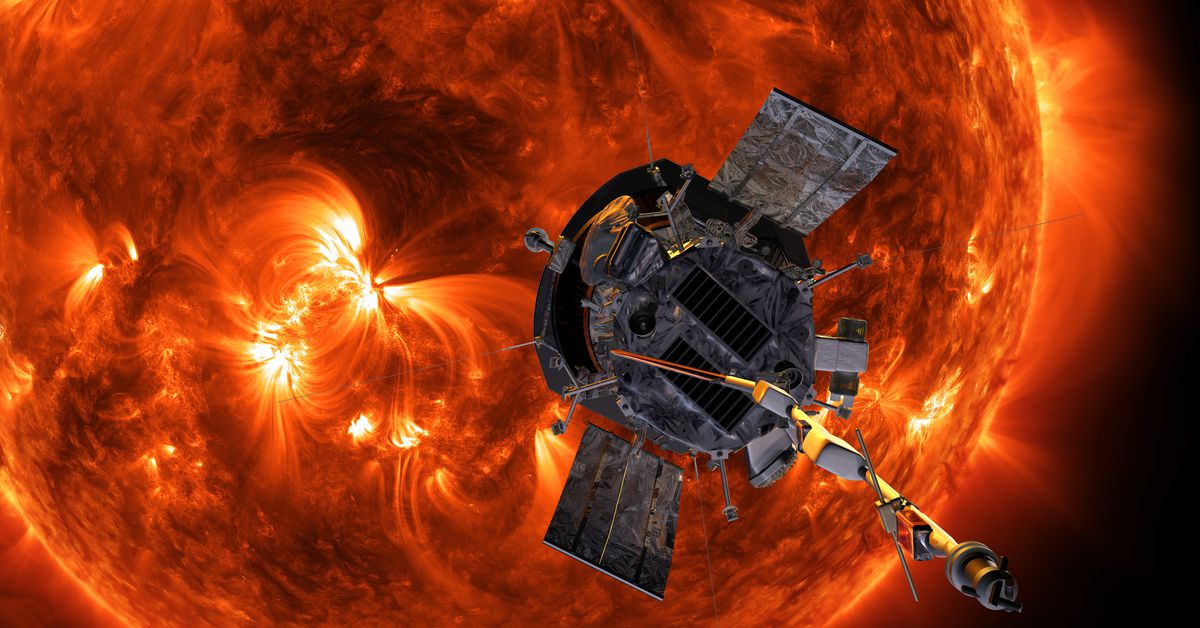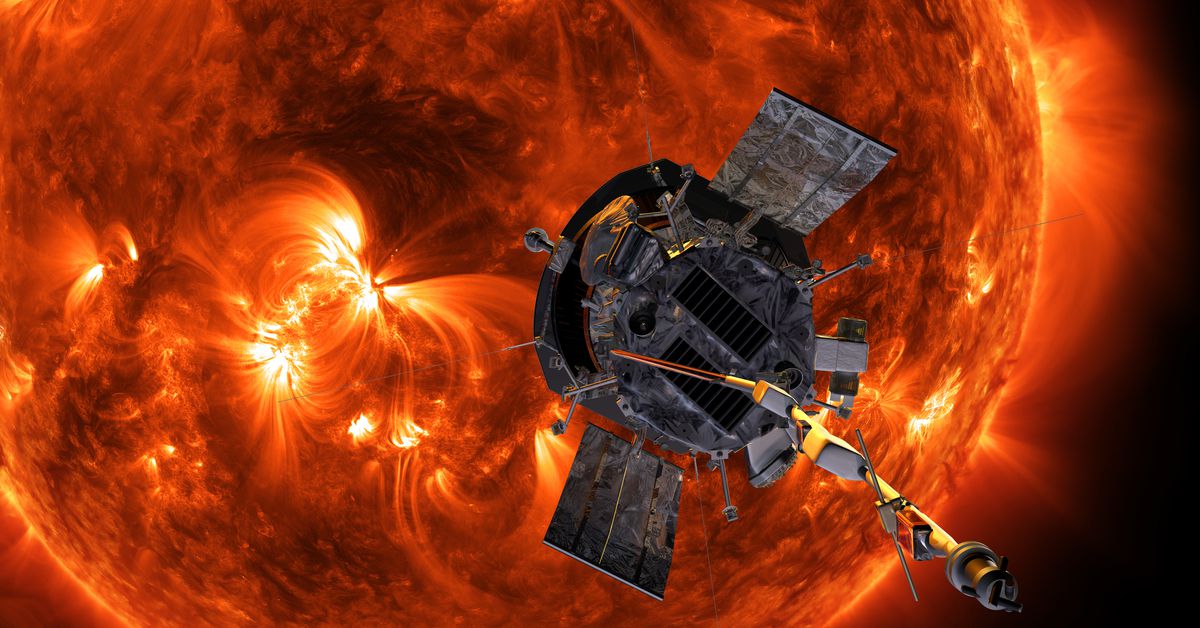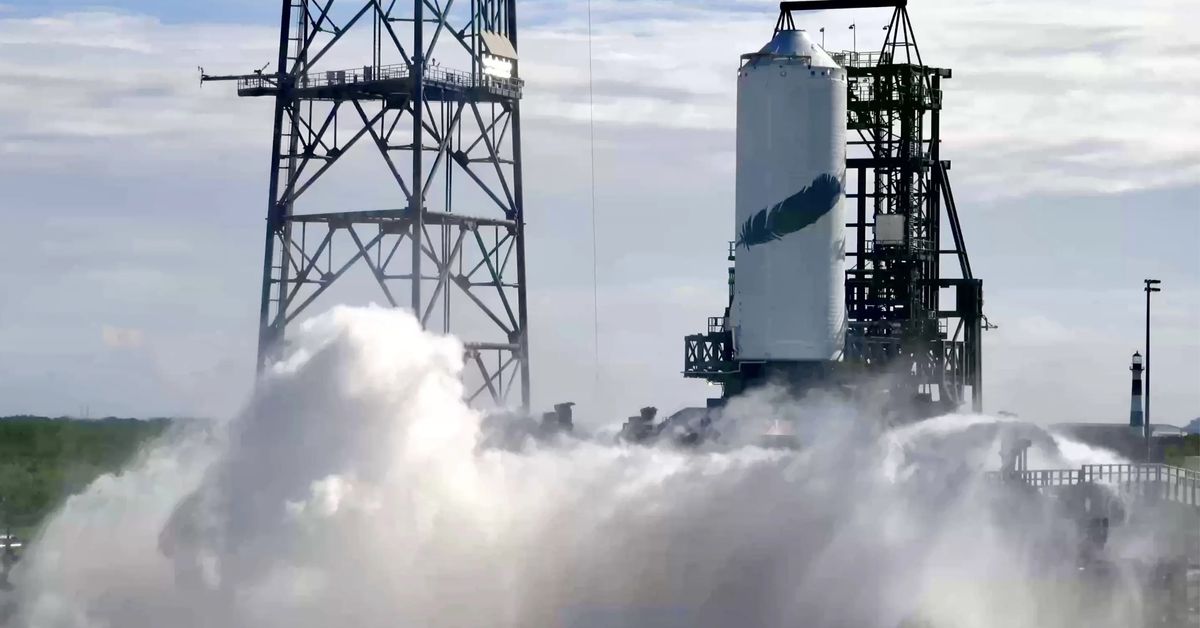In a groundbreaking achievement, NASA’s Parker Solar Probe has successfully flown within 3.8 million miles of the surface of the Sun, marking the closest any human-made object has ever gotten to our star. The probe transmitted a signal back to Earth on December 26th, indicating it is in good health and operating normally.
The Mission’s Objectives
The Parker Solar Probe was designed to study the corona, the atmosphere surrounding the Sun, and investigate why it gets so hot. To achieve this, the probe has flown incredibly close to the Sun, collecting valuable data on solar wind, the Sun’s heat, and how energetic particles are accelerated to near light speed.
A Brief History of the Mission
The Parker Solar Probe was launched by NASA and Johns Hopkins Applied Physics Laboratory in 2018. The mission was years in the making, with scientists and engineers working tirelessly to design and build a probe capable of withstanding the intense heat and radiation surrounding the Sun.
The Close Flyby
On December 20th, the Parker Solar Probe set off on its mission, with the closest approach occurring on December 24th. During this time, the probe flew at an incredible 430,000 miles per hour past the solar surface, sending it into a region of space previously unexplored by humans.
Surviving the Heat
To survive these close encounters, the Parker Solar Probe is equipped with a Sun-facing heat shield that reaches around 2,500 degrees Fahrenheit. Meanwhile, the probe itself remains at a relatively cool temperature of just 85 degrees Fahrenheit. This remarkable design allows the probe to collect data without being destroyed by the intense heat.
The Significance of the Mission
The close flyby is a historic moment for space exploration and has significant implications for our understanding of the Sun and its effects on our solar system. By studying the corona, scientists hope to gain insights into the mechanisms that drive the solar wind and accelerate energetic particles.
What’s Next?
Now that NASA has confirmation of the mission’s success, they expect the Parker Solar Probe to send detailed telemetry data on its status on January 1st. This data will provide further insights into the probe’s performance and help scientists refine their understanding of the Sun’s behavior.
The Science Behind the Mission
The study of solar wind is crucial for understanding the dynamics of our solar system. By examining the properties of the solar wind, scientists can gain a better understanding of how the Sun’s corona affects the surrounding space environment. This knowledge will have significant implications for space weather forecasting and our ability to protect both spacecraft and astronauts from the effects of solar radiation.
The Acceleration of Energetic Particles
One of the key objectives of the Parker Solar Probe is to study how energetic particles are accelerated to near light speed. By examining the mechanisms that drive this acceleration, scientists can gain a better understanding of the fundamental processes that govern our universe.
Challenges and Opportunities
While the Parker Solar Probe has successfully completed its close flyby, there are still numerous challenges and opportunities ahead. The data collected by the probe will be used to refine our understanding of the Sun’s behavior and inform future space missions.
Conclusion
The successful completion of the Parker Solar Probe’s close flyby marks a historic moment in space exploration. By studying the corona and examining the properties of solar wind, scientists have made significant strides towards understanding the fundamental processes that govern our universe. As we continue to explore the vast expanse of space, the data collected by this mission will provide invaluable insights into the workings of our Sun and its effects on our solar system.
Timeline
- December 20th: Parker Solar Probe sets off on its mission
- December 24th: Closest approach to the solar surface
- December 26th: Probe transmits signal back to Earth, indicating it is in good health and operating normally
- January 1st: Expected transmission of detailed telemetry data on the probe’s status
Resources
For more information on the Parker Solar Probe and its mission, please visit NASA’s official website.



